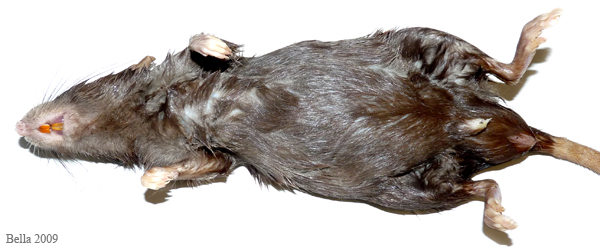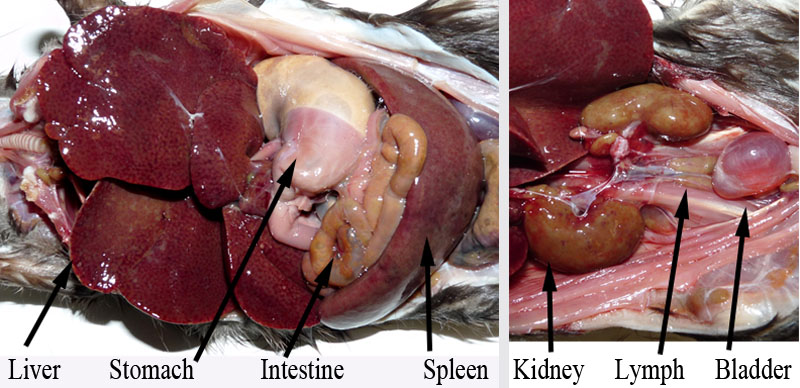Figure 1: Granulocytic Leukemia in a 14-month-old rat (Zissou).
Case history and photos
History
Zissou was a 14-month-old male rat. After weaning he failed to thrive and was always very small compared to his cage mates.
Clinical signs
Chronic signs include failure to thrive once he was a few months old. As an adult Zissou was very thin even though he had a good appetite. Towards the end of his life he became severely wasted (cachexic). His weight, at the time of his death, was 280 grams (9.9 oz). His breathing became labored, his body temperature was low, and he was weak.
Diagnosis
The veterinarian was unable to provide a diagnosis.
Treatment
Zissou was treated with Baytril as a prophylactic/diagnostic measure with no response.
Outcome
Death.
Follow-up
NECROPSY
Bilateral renomegaly (both kidneys enlarged), hepatomegaly (enlarged liver 41 grams), and splenomegaly (enlarged spleen). These organs were also discolored (yellow/brown/pale) as well as soft. The lymph nodes throughout the body were soft, enlarged, and discolored (yellow, green).
DISCUSSION
Extensive histopathology showed chronic granulocytic leukemia which is the type of leukemia that originates in the bone marrow (myelogenous leukemia). This is a very rare leukemia in rats.
Even though most of his organs were infiltrated by malignant granulocytes it is theorized that the chronic nature of his disease enabled the organs to slowly compensate.
Photos
 In the above photo it is apparent that Zissou had a disease that caused severe physical wasting. |
 In the above left necropsy photograph it is apparent that the liver is greatly enlarged (hepatomegaly) as well as the spleen (splenamegaly).You can see the yellow/brown discoloration of these organs which is usually indicative of either a severe systemic infection or cancer infiltration. The right photo shows the enlarged kidneys (renamegaly) as well as some affected lymph nodes. The kidneys are typically dark red and about half the size of these. The lymph nodes (lumbar and renal) are usually not visible. Once again we see the discoloration that we noticed in the other organs. |


